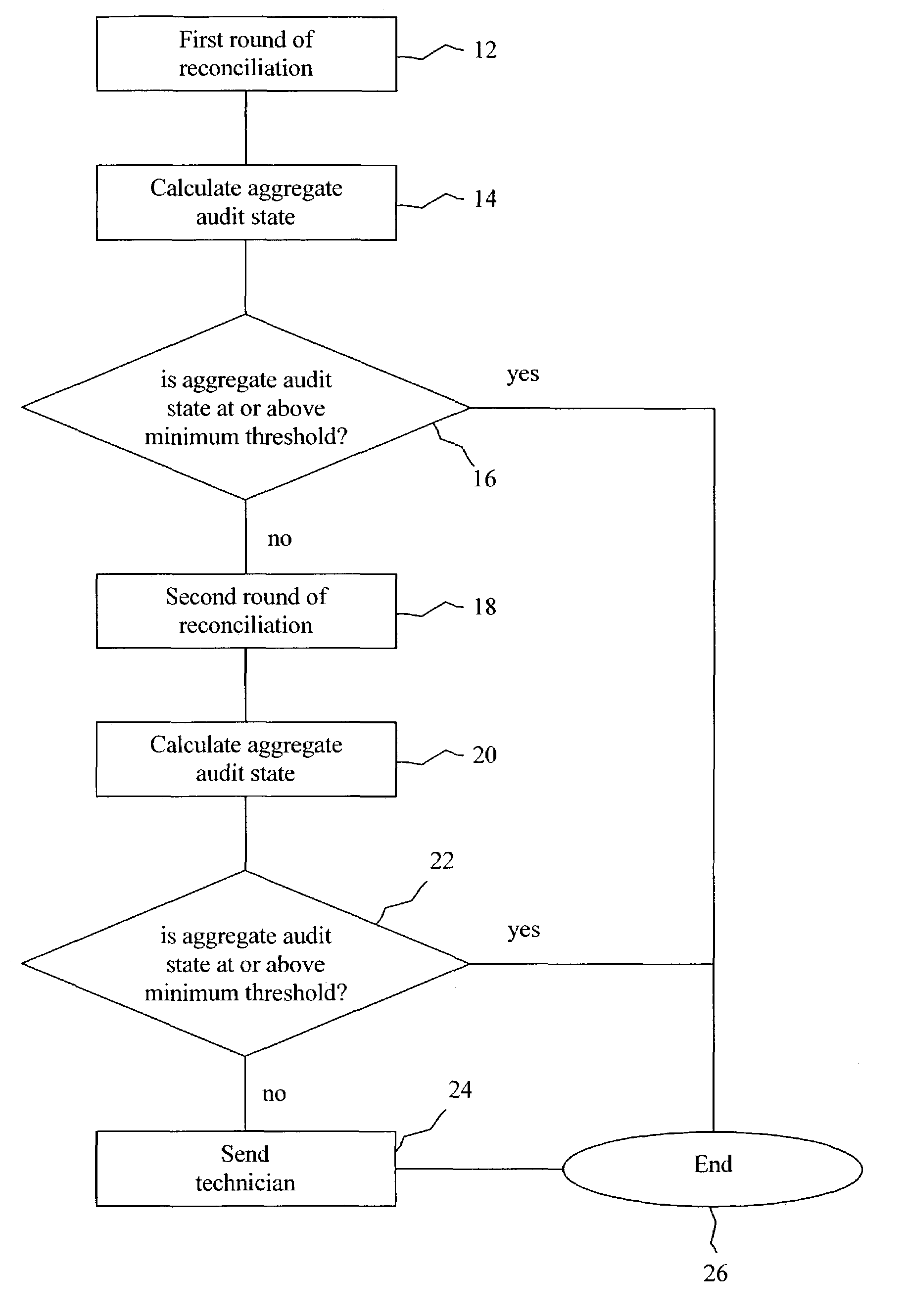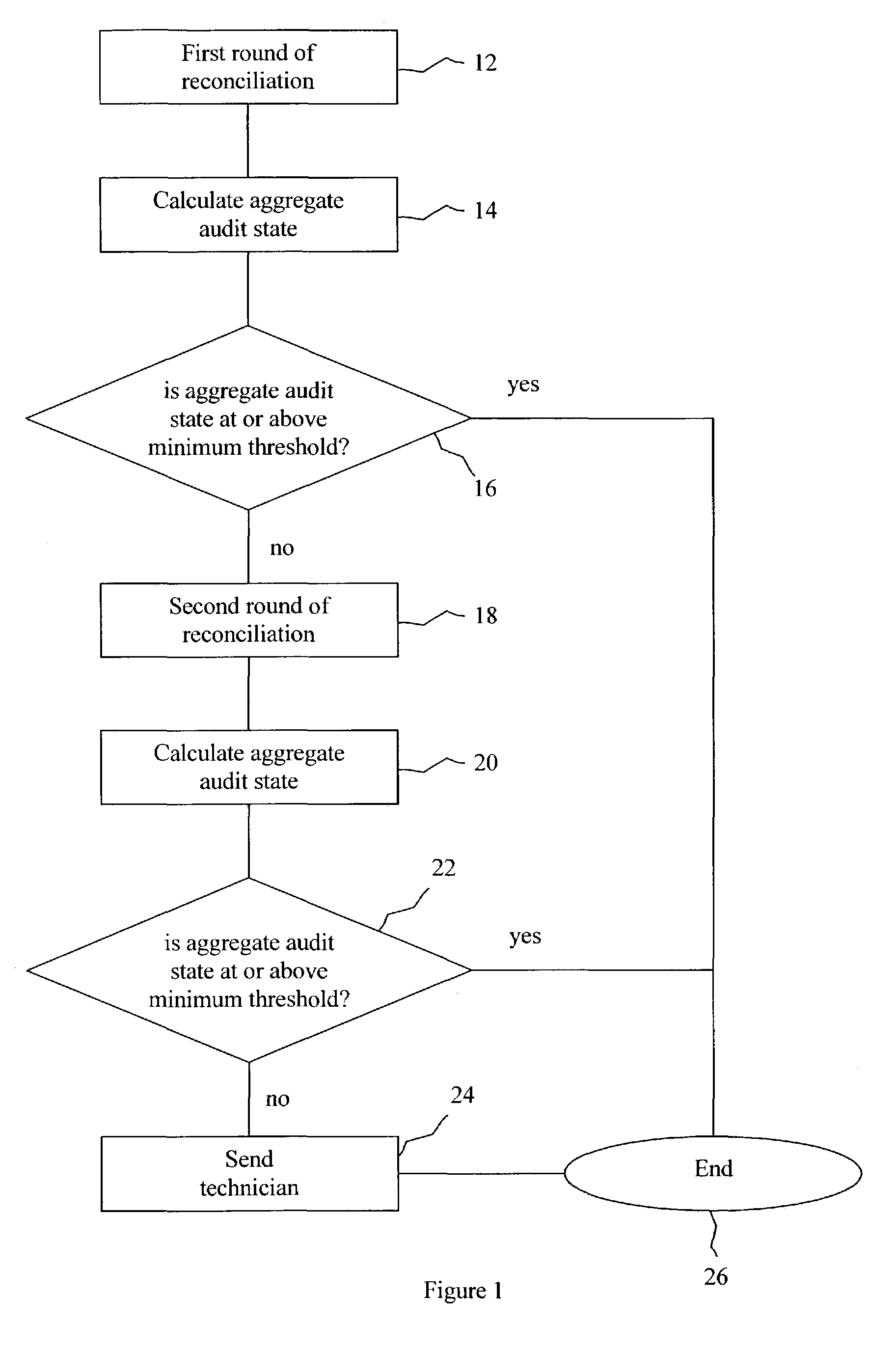Network model audit and reconciliation using state analysis
a network model and state analysis technology, applied in error detection/correction, instruments, digital computers, etc., can solve problems such as limiting the availability of portions and affecting the performance of systems
- Summary
- Abstract
- Description
- Claims
- Application Information
AI Technical Summary
Benefits of technology
Problems solved by technology
Method used
Image
Examples
Embodiment Construction
[0015]The present invention uses a set of defined “audit” states to improve the auditing process and the management of inventory and topology and to facilitate the reconciliation of discrepancies between a network model and an actual network. The use of these audit states can aid in pinpointing sources and causes of specific network changes, troubleshooting configuration problems, recovering lost network resources, identifying and correcting gaps in operational processes, improving data accuracy within network models, restoring corrupted or sabotaged network services, identifying covert network resource uses, speeding service delivery through improved automation, reducing service delivery rework, accelerating problem repair, and reducing the overall number of service problems.
[0016]The alignment or misalignment of a network model with the network it is intended to depict can be discovered through the comparison process described above based on one of several audit methods. First, a ...
PUM
 Login to View More
Login to View More Abstract
Description
Claims
Application Information
 Login to View More
Login to View More - R&D
- Intellectual Property
- Life Sciences
- Materials
- Tech Scout
- Unparalleled Data Quality
- Higher Quality Content
- 60% Fewer Hallucinations
Browse by: Latest US Patents, China's latest patents, Technical Efficacy Thesaurus, Application Domain, Technology Topic, Popular Technical Reports.
© 2025 PatSnap. All rights reserved.Legal|Privacy policy|Modern Slavery Act Transparency Statement|Sitemap|About US| Contact US: help@patsnap.com


